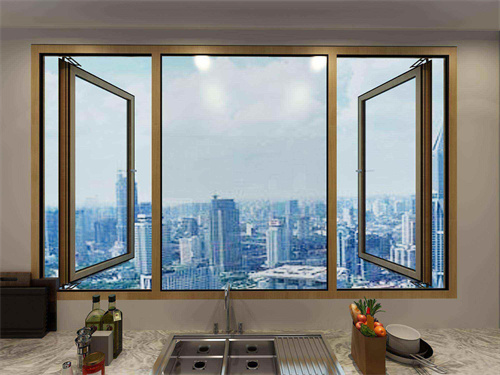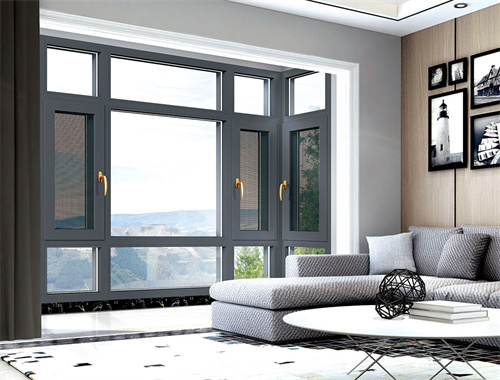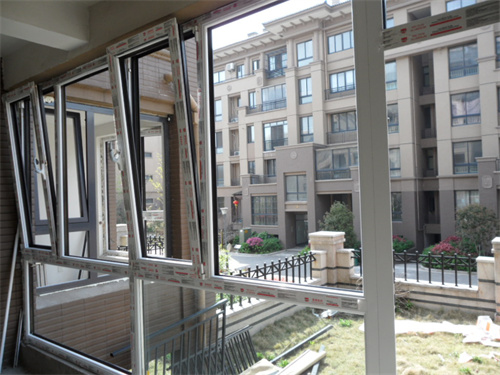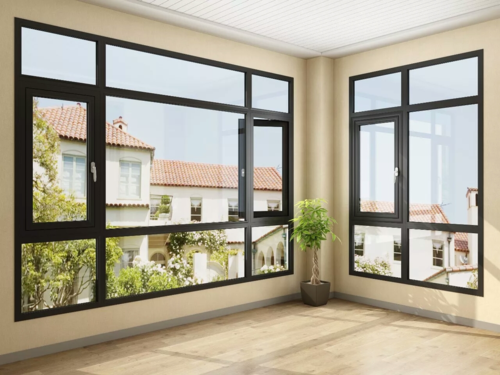With the continuous advancement of technology, building materials are also undergoing constant updates and improvements. Aluminum doors and windows have a high usage rate in the market. Among aluminum doors and windows, what are the differences between thermal break aluminum doors and windows and non-thermal break aluminum doors and windows?
Differences between thermal break aluminum doors and windows and non-thermal break aluminum doors and windows
1. Structural Differences
Thermal break aluminum doors and windows are constructed by splitting the aluminum alloy into two pieces, which are then reconnected using a plastic thermal break. This thermal break is placed inside the aluminum alloy and serves to provide thermal insulation. The design of thermal break aluminum doors and windows effectively blocks the transfer of heat and cold, achieving insulation and soundproofing effects.

Non-thermal break aluminum doors and windows have a relatively simple design, lacking the thermal insulation structure. This type of aluminum door and window primarily relies on the aluminum alloy material to provide basic functions such as impact resistance, corrosion resistance, and durability.
2. Thermal Insulation Performance
Due to the structural characteristics of thermal break aluminum doors and windows, they exhibit excellent thermal insulation performance. The plastic thermal break inside the aluminum alloy effectively isolates the transfer of heat and cold, thereby reducing heat loss and cold air infiltration, keeping the interior warm in winter and cool in summer.
In contrast, non-thermal break aluminum doors and windows are slightly inferior in thermal insulation performance. Although they do not have a thermal break design, the aluminum alloy material itself still possesses some degree of thermal insulation, but it is not as pronounced as that of thermal break aluminum doors and windows.

3. Heat Retention Performance
Thermal break aluminum doors and windows outperform non-thermal break aluminum doors and windows in terms of heat retention. By using a plastic thermal break to eliminate the conduction of hot and cold air, thermal break aluminum doors and windows effectively reduce energy loss and maintain a more stable indoor temperature, leading to energy savings. Especially in cold winter months, thermal break aluminum doors and windows minimize cold air infiltration, effectively reducing heating energy consumption.

Conversely, non-thermal break aluminum doors and windows do not perform as well in heat retention. Without a thermal break design, hot and cold air can easily conduct through the aluminum material, leading to significant indoor temperature fluctuations and an inability to effectively maintain warmth or coolness indoors.
4. Durability
Thermal break aluminum doors and windows have a structure that includes plastic connection components and rubber seals, which limit the service life of these parts in regular use. However, thermal break aluminum doors and windows are better sealed, ensuring a separation between interior and exterior temperature differences. This good sealing performance also means limited ventilation.
In comparison, non-thermal break aluminum doors and windows do not require plastic bridging, hence there is no risk of plastic breakage. Although the sealing performance is relatively poorer, the better ventilation capability can provide improved indoor air quality.

Summary: The differences between thermal break aluminum doors and windows and non-thermal break aluminum doors and windows have been introduced here. Each type of aluminum door and window has its characteristics, and it is crucial to choose the appropriate material based on specific needs. If insulation and heat retention performance are prioritized, with high energy consumption requirements, thermal break aluminum doors and windows should be chosen. If ventilation and durability are more important, non-thermal break aluminum doors and windows could be considered. In conclusion, consumers should weigh various factors based on their needs to select suitable door and window materials.



